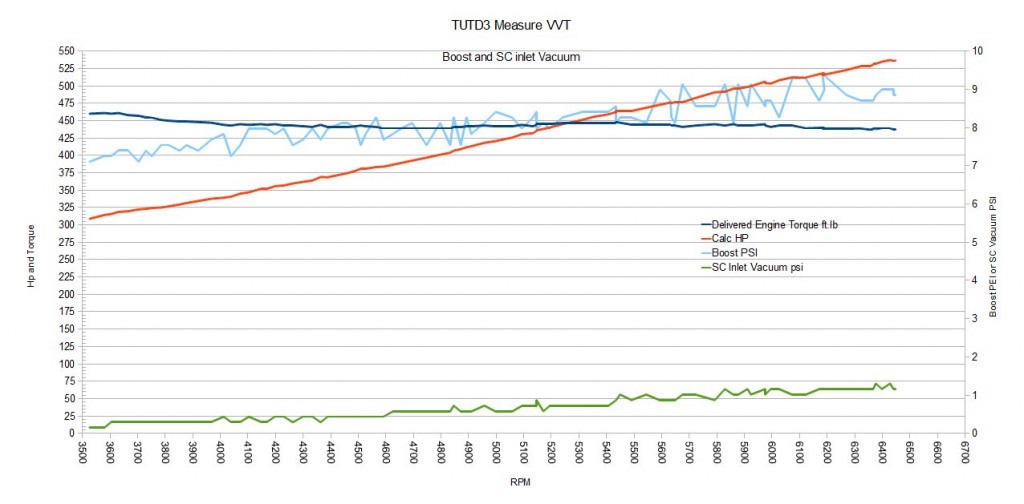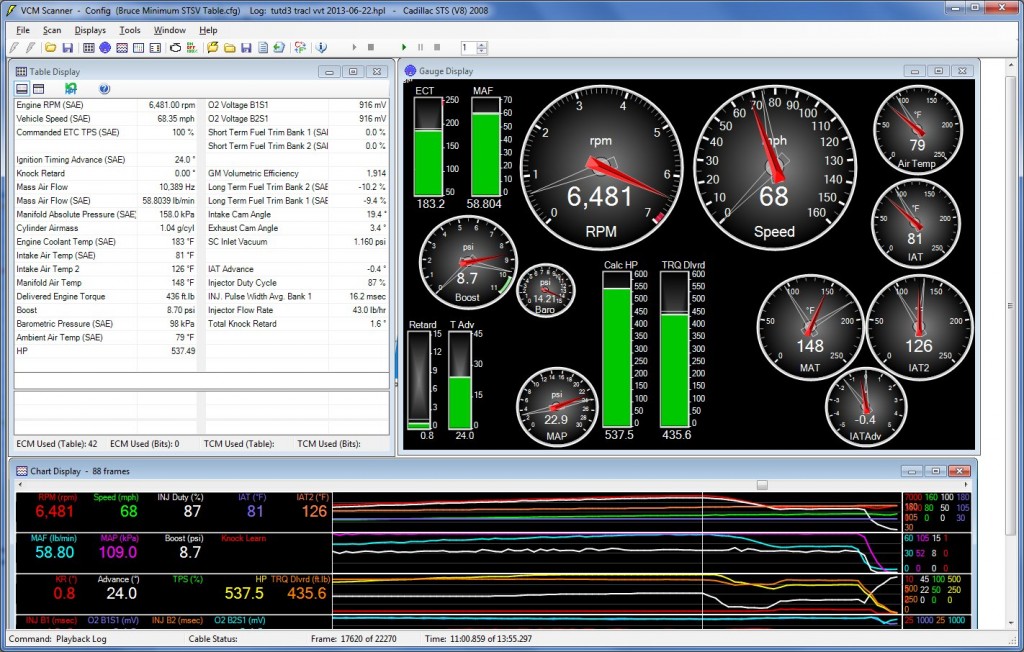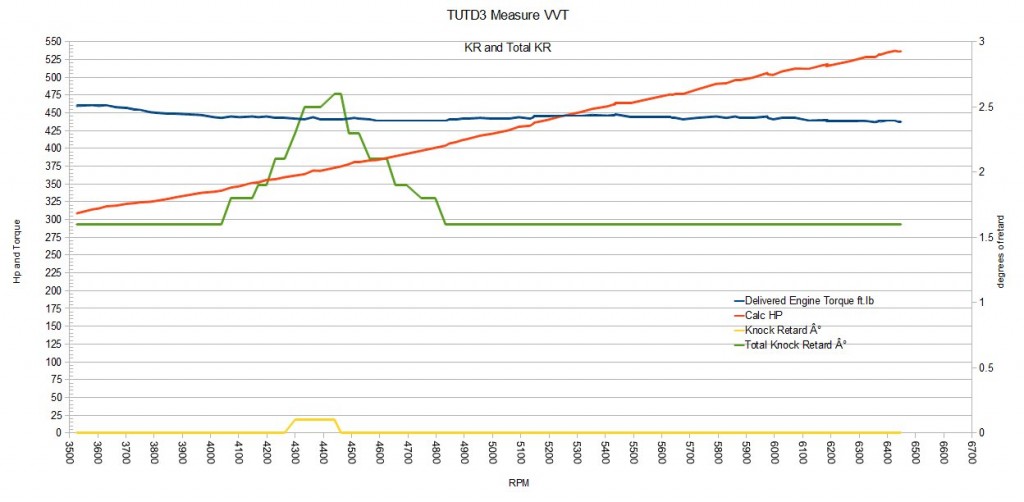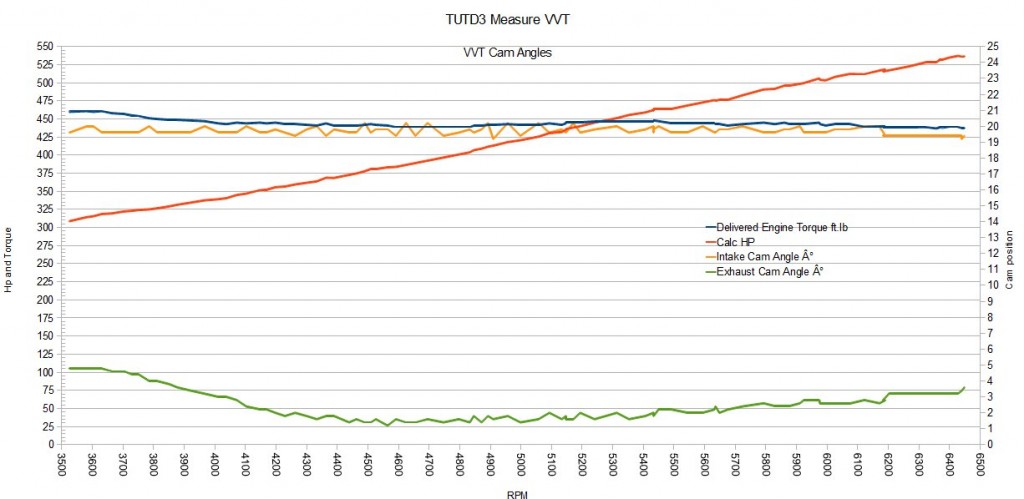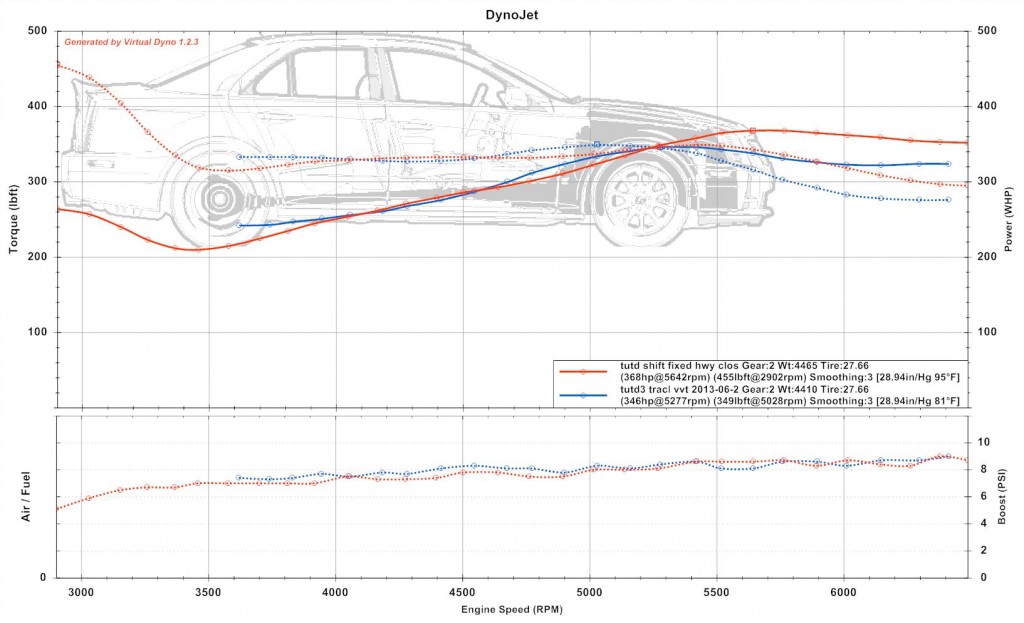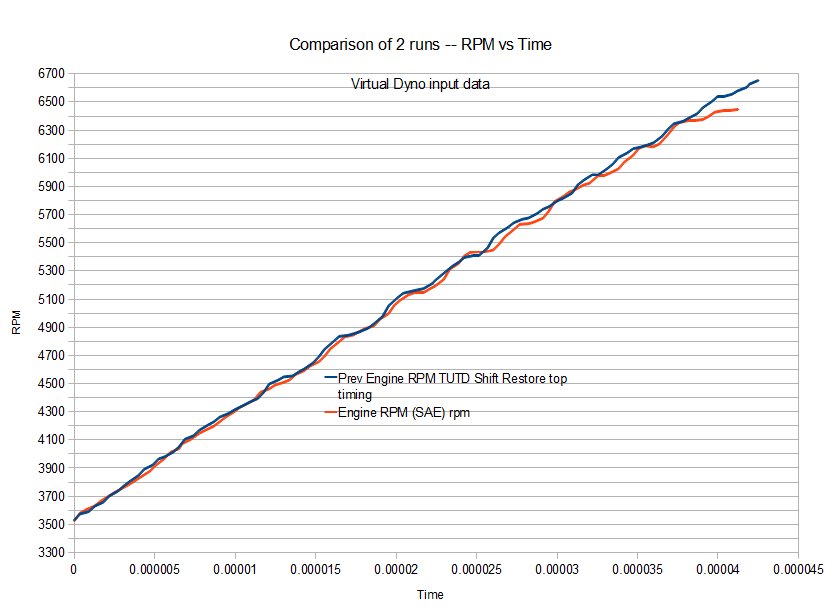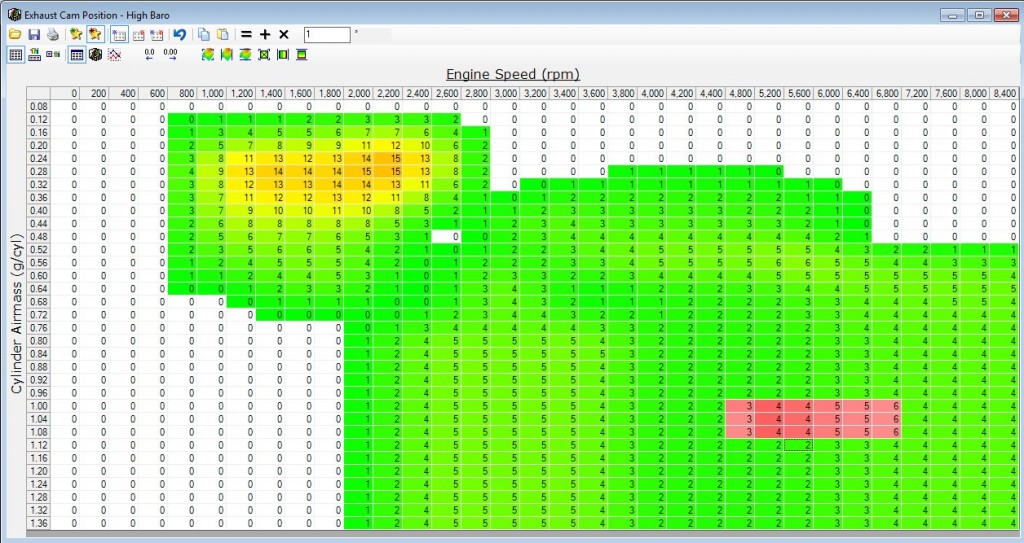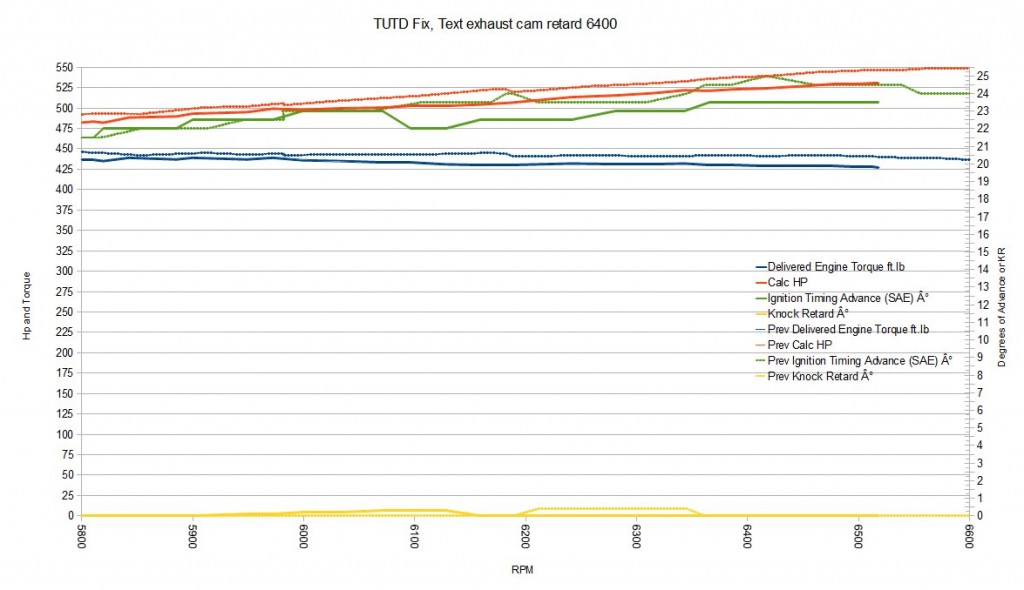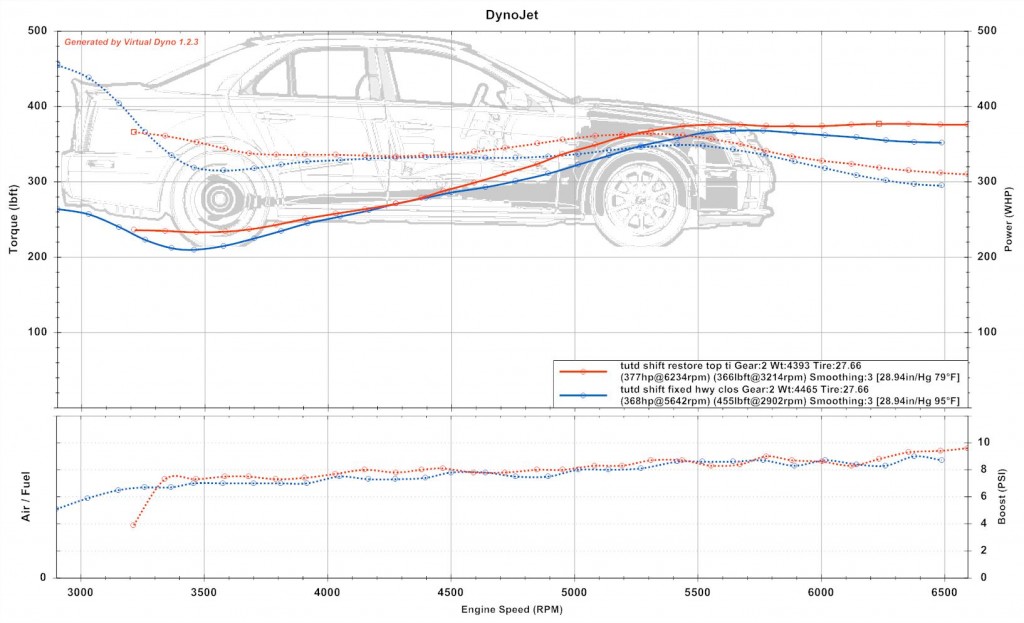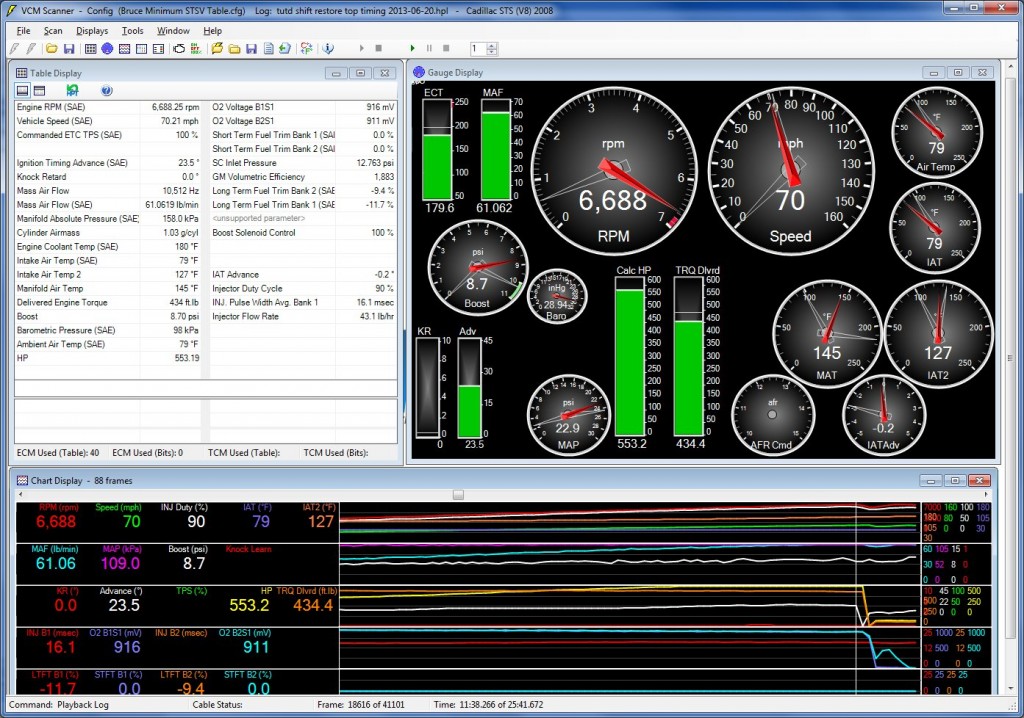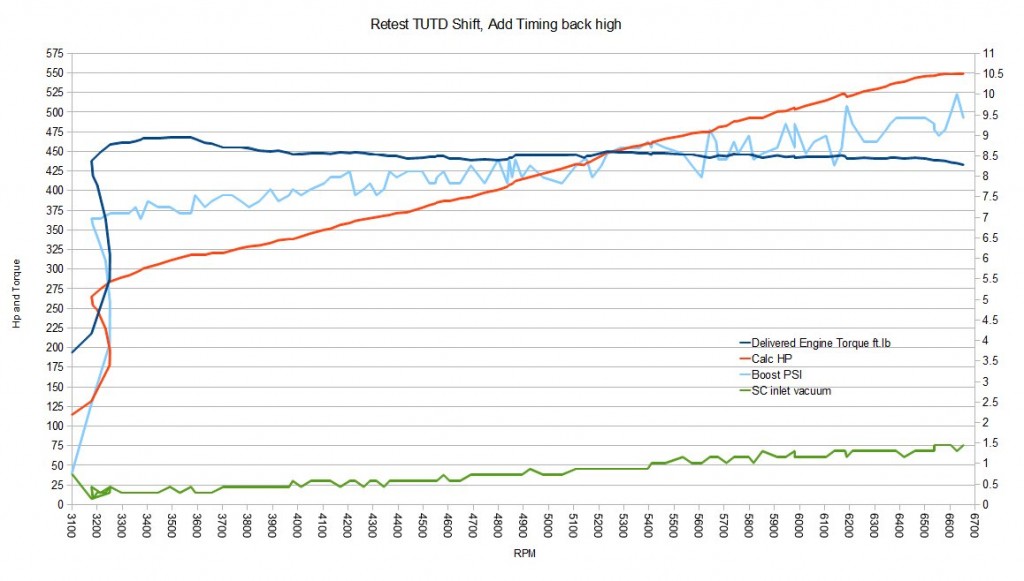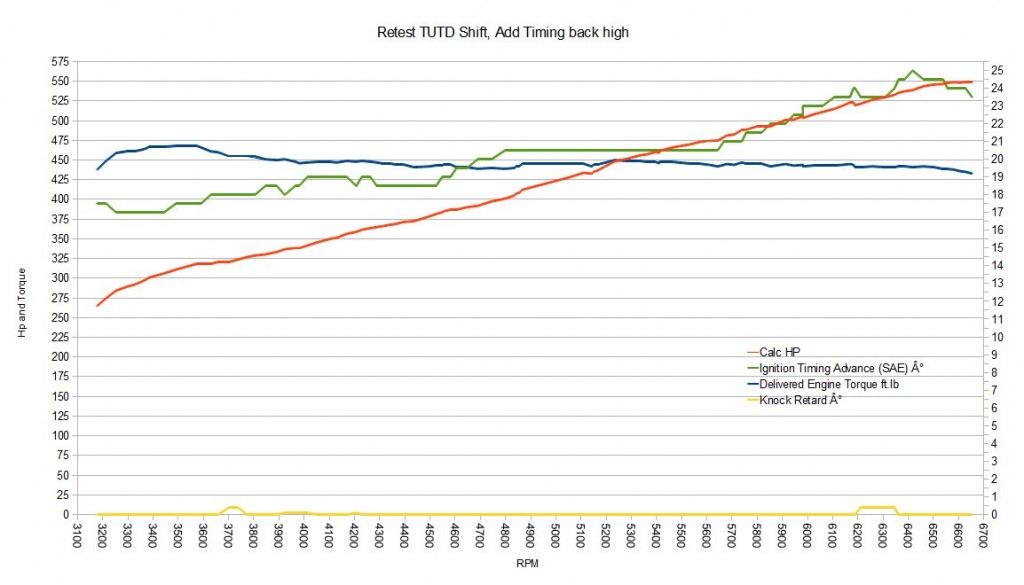Variable valve timing allows tuning of the camshaft timing across the RPM range. In my 2008 Cadillac STS-V, the DOHC engine allows individual tuning for exhaust and intake cams.
This graph shows today’s run delivered torque and calc hp vs supercharger boost and supercharger inlet vacuum in psi. It is provided as a baseline comparison for how the engine performed today.
Hptuners capture at peak in 2nd gear. This run shifted in custom TUTD mode at top of 2nd to allow selection of 2nd gear but smooth transition to 3rd.
I have previously been charting KR, or knock retard. I added tracking for Total KR, which includes burst, or pre-emptive knock retard. The KR is shown in yellow, and the Total KR in green on this chart. I think you can see the Total KR anticipate and over-shadow the KR, as well as the fact that the Total KR runs a degree of KR all the time, which was a surprise to me. More thought and study needed here.
I also should note that my gauge for KR tracks the Timing Retard sensor, which seems to be different from just KR or Total KR. Again, more study.
Finally, this graphic shows the VVT operation — the gold line is the intake cam position, and the green line is the exhaust cam position. Basically, in the pressure range the V is running, the intake cam is commanded to 20 degrees, while the exhaust cam goes from 5 degrees at low RPM to 2 degrees midrange to 4 degrees at high RPM.
In our previous experiment, I changed the exhaust cam to show a more expected pattern similar to lower pressure settings by adding 1 degree at 4800 and 2 degrees of cam position from 5200 on. We did not see a improvement or degradation, so it was reset it to OEM for this run.
It surprises me that the VVT cam position is not constant (waivers). I am not sure if this is an effect of the variance in the boost, or if this is a cause of the variance in the boost.
I included a Virtual Dyno run. Other than it is hotter now I am unclear why this run was markedly lower than prior. Both are ‘cold’ runs at operating temp but without heat soak. The MAF also shows less air in lb/min so I don’t think it is just test variance, but I am uncertain what caused.
This graphic shows the raw data that Virtual Dyno uses — time deltas and RPM for the two runs shown. The runs appear equivalent until 6300+ rpm, where today’s run tapers off. This may be an effect of the TUTD shift for today’s run vs the hold to redline of previous run?
I will note that I got gas from an unusual location on last trip, not my normal source, but was marketed as 93 octane.
The boost psi looks similar between the two. The good news is programming the TUTD to shift automatically avoids pulling the V back in to normal then back to sport, which appears to have been causing the RPM pattern that disrupted the virtual dyno readings. The last few charts have not shown that issue.
Summary
The purpose of today’s test was to select and record VVT cam positions over RPM to characterize current state with OEM tune. Next I plan to study changes to the intake cam position.

